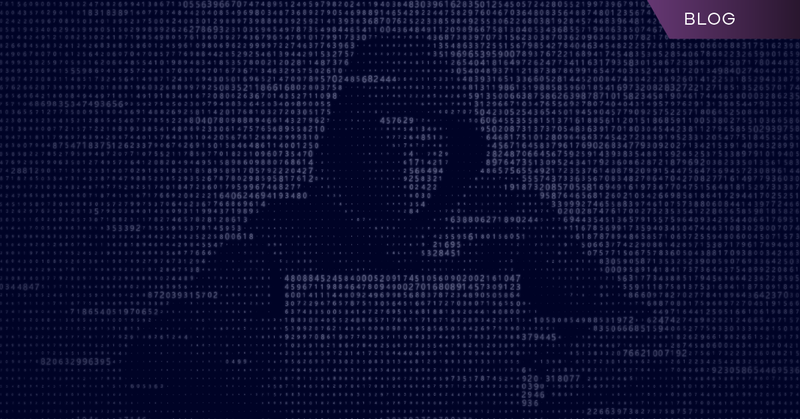Double Extortion Ransomware?
Double extortion ransomware attacks have emerged as one of the most destructive cyber threats facing organizations today. These sophisticated attacks combine data encryption with data theft, creating a dual crisis that demands immediate attention from security leaders.
Definition
What Is Double Extortion Ransomware?
The financial impact of double extortion ransomware attacks extends beyond ransom payments to include operational downtime, recovery costs, and potential regulatory fines. Organizations unprepared for this evolving threat face devastating consequences: compromised sensitive data, business disruption, and lasting reputational damage.
Security professionals must understand the mechanics of double extortion ransomware to implement effective defense strategies. The attackers’ playbook has evolved significantly; traditional security measures no longer provide adequate protection against these multi-faceted threats.
Overview
Overview of Double Extortion Ransomware
Double extortion ransomware represents a dangerous evolution in cyber threats: Attackers both steal sensitive data and encrypt systems, then demand payment not only to restore access but also to prevent the public release of stolen information.
This approach creates tremendous pressure on victims, who must consider both the operational impact of encrypted systems and the potentially catastrophic consequences of confidential data exposure. Unlike traditional ransomware that simply locked files, double extortion tactics leave victims with no good options: pay the ransom or face both extended downtime and data leakage.
Initial access typically occurs through phishing emails containing malicious links or attachments, exploitation of unpatched vulnerabilities, compromised credentials, or insecure remote desktop protocols.
The increasing aggressiveness of these attacks stems from their effectiveness: When organizations face both system encryption and data leakage threats, they become more likely to pay ransoms, creating a lucrative criminal business model that continues to attract sophisticated threat actors.
Different organizations face varying levels of risk from double extortion ransomware. Regulated industries like healthcare and financial services face additional compliance penalties and reporting requirements when sensitive data is compromised. Cloud-first enterprises may have unique challenges with visibility across distributed environments.
Public sector organizations often struggle with legacy systems that remain unpatched and vulnerable. Critical infrastructure operators face the added complication of potential physical safety impacts when operational technology networks are compromised.
How it works
How Double Extortion Ransomware Works
This table outlines the typical progression of a double extortion ransomware attack:
| Stage | Activity | Description |
|---|---|---|
| 1. Initial access | Phishing, vulnerability exploitation, RDP compromise | Attackers gain entry through social engineering, unpatched systems, or weak remote access configurations. |
| 2. Reconnaissance | Network scanning, credential harvesting | Attackers map the network, identify valuable data, and obtain additional credentials for lateral movement. |
| 3. Privilege escalation | Admin rights acquisition | Attackers elevate permissions to gain broader system access. |
| 4. Lateral movement | Internal network traversal | Attackers spread throughout the network to access additional systems and data repositories. |
| 5. Data exfiltration | Sensitive data theft | Attackers quietly extract valuable data before encryption begins. |
| 6. Encryption preparation | Backup deletion, security tool disabling | Attackers disable defenses and remove recovery options. |
| 7. Encryption execution | Ransomware deployment | Systems and files are encrypted, making them inaccessible. |
| 8. Double extortion | Ransom demands, data leak threats | Attackers demand payment to decrypt files AND prevent publication of stolen data. |
Importance of Awareness
Importance of Double Extortion Ransomware Awareness
The stakes involved in double extortion attacks extend far beyond simple operational disruption. Financial impacts include direct ransom payments (often hundreds of thousands or millions of dollars), recovery costs, business downtime, and potential regulatory fines.
Legal consequences may involve lawsuits from affected customers, shareholders, or partners whose data was compromised. Reputational damage often proves the most lasting effect: Customer trust, once broken, requires significant time and investment to rebuild.
Data exposure amplifies these consequences substantially. When sensitive information reaches public forums or competitors, organizations face regulatory scrutiny under frameworks like GDPR, HIPAA, or industry-specific requirements.
Public disclosure requirements often trigger mandatory reporting to affected individuals, creating additional costs and reputation management challenges. The exposed data itself may contain intellectual property, competitive information, or sensitive customer details that create long-term strategic disadvantages.
Strong data protection combined with rapid recovery capabilities provides the foundation for minimizing disruptions from these attacks. Organizations need comprehensive visibility into their data assets, robust backup systems that remain inaccessible to attackers, and tested recovery processes that can quickly restore operations.
The ability to recover without paying the ransom removes the attackers’ leverage while maintaining continuous business.
Recommended Prevention Strategies
Recommended Prevention Strategies for Double Extortion Ransomware
Proactive measures significantly reduce both the likelihood and impact of successful attacks. This table outlines key prevention strategies organizations should implement:
| Strategy | Implementation Approach | Key Benefits |
|---|---|---|
| Immutable backups | Deploy write-once, read-many storage solutions with air-gapped copies. | Protects against attackers being able to encrypt or delete backup data. |
| Patch management | Implement automated vulnerability scanning and prioritized patching. | Eliminates known entry points exploited by ransomware operators. |
| Network segmentation | Divide networks into security zones with controlled access. | Limits lateral movement and contains potential breaches. |
| Multi-factor authentication | Require MFA for all remote access and privileged accounts. | Prevents credential-based attacks even if passwords are compromised. |
| User security training | Regular phishing simulations and security awareness programs. | Reduces successful social engineering attempts. |
| Endpoint protection | Deploy next-gen antivirus and EDR solutions. | Detects and blocks ransomware execution attempts. |
| Data classification | Identify and properly protect sensitive information. | Prioritizes security controls for high-value assets. |
| Incident response planning | Develop and regularly test ransomware-specific response procedures. | Reduces recovery time and improves decision-making during incidents. |
Double Extortion vs. Traditional Ransomware
Distinguishing Double Extortion from Traditional Ransomware
Traditional ransomware attacks follow a straightforward approach: Infiltrate systems, encrypt files, and demand payment for the decryption key. Double extortion adds a critical second phase: Before encryption, attackers exfiltrate sensitive data and threaten its public release or sale unless additional demands are met.
This fundamental difference transforms the threat from a recoverable IT incident into a potential data breach with far-reaching consequences.
A dangerous misconception persists that robust backups alone eliminate ransomware risks. While backups remain essential for recovery from encryption, they offer no protection against the data exposure component of double extortion attacks.
Even organizations with perfect backup discipline face the threat of sensitive information being leaked, potentially triggering regulatory violations, competitive disadvantages, and reputational damage.
The dual-threat nature of double extortion creates unprecedented urgency for victim organizations. Traditional ransomware primarily threatened business continuity through downtime; recovery from backups provided a clear path forward.
Double extortion forces organizations to simultaneously address both operational recovery AND potential data breach response, often with conflicting priorities and under extreme time pressure from attackers threatening imminent data publication.
Comparison: Traditional vs. Double Extortion Ransomware
Let’s talk about the key differences between traditional and double extortion ransomware:
| Aspect | Traditional Ransomware | Double Extortion Ransomware |
|---|---|---|
| Primary threat | File/system encryption | File/system encryption + data theft |
| Recovery option | Restore from backups or pay ransom | Restore from backups + address data leak threat |
| Data impact | Temporary inaccessibility | Potential permanent exposure |
| Time pressure | Moderate (business downtime) | Severe (downtime + leak deadline) |
| Regulatory risk | Limited (if no data access) | Significant (reportable data breach) |
| Typical ransom demand | Lower (single payment) | Higher (payment for decryption + silence) |
| Post-attack concerns | System integrity | System integrity + data confidentiality |
| Backup effectiveness | High (restores operations) | Partial (doesn’t address data theft) |
Benefits
Benefits of Proactive Defense Strategies
Organizations that implement proactive defense strategies position themselves to significantly reduce both the likelihood and impact of double extortion attacks. Anticipating these threats allows security teams to identify and remediate vulnerabilities before attackers exploit them, dramatically reducing potential downtime and limiting data loss.
This proactive stance also preserves brand credibility: Customers increasingly expect organizations to demonstrate responsible security practices rather than merely responding after breaches occur.
The return on investment for comprehensive data protection spans technical, financial, and operational dimensions. Protecting data across multi-cloud, on-premises, and SaaS environments requires initial investment but delivers substantial savings by preventing costly incidents.
Organizations with mature data protection typically experience fewer successful attacks, recover more quickly when incidents occur, and maintain stronger regulatory compliance postures – all contributing to measurable business value.
Automation and robust incident response capabilities transform security from a reactive necessity into a strategic business enabler. Automated threat detection identifies suspicious activities before they escalate into full breaches. Streamlined recovery workflows reduce downtime from days to hours.
Comprehensive incident response plans provide clear decision frameworks during high-pressure situations, allowing leadership to make informed choices rather than panic-driven reactions.
Build a Proactive Defense
Step-by-step Process for Proactive Defense
Below is a step-by-step process outlining how organizations can shift from reactive to proactive defense against double extortion ransomware:
1. Conduct comprehensive risk assessment:
• Identify critical data assets and their current protection levels.
• Document potential attack vectors specific to your environment.
• Evaluate existing security controls against double extortion techniques.
2. Implement layered security controls:
• Deploy immutable, air-gapped backup solutions.
• Establish network segmentation to limit lateral movement.
• Implement privileged access management for sensitive systems.
3. Enhance detection capabilities:
• Deploy behavior-based monitoring for data exfiltration attempts.
• Implement file integrity monitoring on critical systems.
• Establish baseline network behavior and alert on anomalies.
4. Develop specialized response procedures:
• Create double extortion-specific playbooks.
• Define clear decision authority for ransom situations.
• Establish relationships with law enforcement and response experts.
5. Test and refine defense strategy:
• Conduct regular tabletop exercises for double extortion scenarios.
• Perform penetration testing focused on exfiltration techniques.
• Update controls based on emerging threat intelligence.
Commvault’s Support
How Commvault Supports Resilience Against Double Extortion
Commvault’s unified approach to data protection provides comprehensive resilience against double extortion ransomware across hybrid and multi-cloud environments. The platform integrates backup, security, and recovery capabilities to address both aspects of these sophisticated attacks: data theft and encryption.
This holistic strategy helps organizations maintain business continuity while protecting sensitive information from unauthorized access or exposure.
Integrated backup and rapid recovery capabilities reduce the impact of ransomware attacks. Commvault’s immutable backups remain protected from tampering or deletion by ransomware operators, providing reliable recovery points even after sophisticated attacks.
Automated workflows accelerate the recovery process, helping minimize downtime and business disruption. Air-gapped protection options create physical or logical separation between production and backup environments, helping prevent attackers from compromising both simultaneously.
Commvault’s AI-supported threat detection capabilities provide early warning of potential ransomware activity, often identifying attacks in their early stages before encryption begins.
The platform’s intelligent alerting system notifies security teams of suspicious behaviors that may indicate data exfiltration attempts or encryption preparation. Anomaly detection identifies unusual access patterns or unexpected file modifications that frequently precede ransomware deployment.
Enhance Resilience with Commvault
Follow these implementation steps to enhance resilience against double extortion ransomware with Commvault solutions:
1. Initial risk assessment and planning:
• Identify critical data assets requiring protection.
• Document current backup and recovery capabilities.
• Establish recovery time objectives for various systems.
2. Solution architecture design:
• Select appropriate deployment models (on-premises, cloud, hybrid).
• Design immutable storage configuration.
• Plan air gap implementation strategy.
3. Implementation and integration:
• Deploy Commvault backup infrastructure.
• Configure ransomware protection features.
• Integrate with existing security monitoring tools.
4. Testing and validation:
• Verify backup integrity and immutability.
• Test recovery processes and measure recovery time objective/recovery point objective achievement.
• Simulate ransomware recovery scenarios.
5. Operational transition:
• Train IT staff on ransomware response procedures.
• Document recovery runbooks for various scenarios.
• Establish regular testing and validation schedule.
Organizations implementing comprehensive protection against double extortion ransomware position themselves to maintain operational continuity and preserve data integrity. The combination of immutable backups, rapid recovery capabilities, and proactive monitoring creates a robust defense against increasingly sophisticated attacks.
By partnering with a proven data protection provider, businesses can build the resilience needed to withstand and recover from modern ransomware threats. Let us show you how we help protect your organization against double extortion ransomware.

Ransomware 101

Ransomware Trends for 2025
